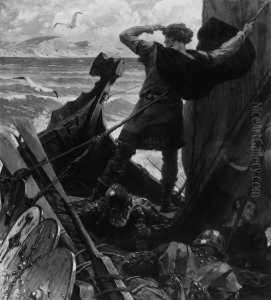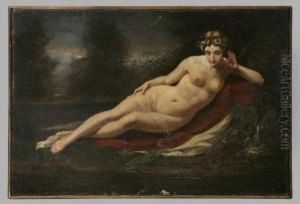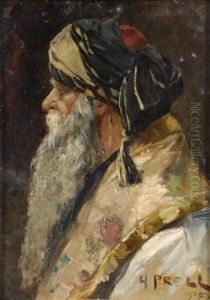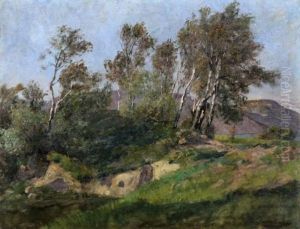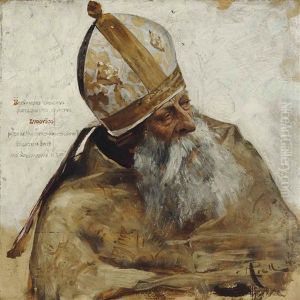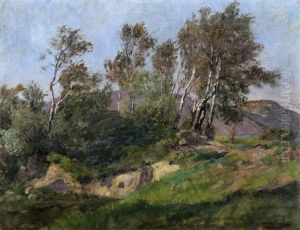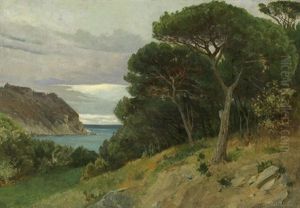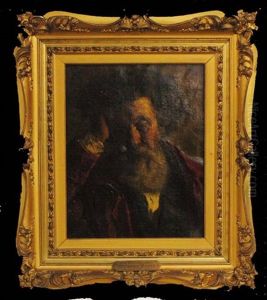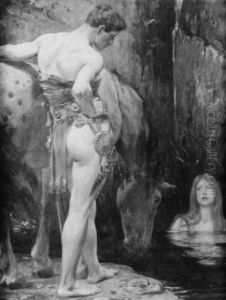Hermann Prell Paintings
Hermann Prell was a distinguished German painter and sculptor born on March 31, 1854, in Leipzig. He was known for his contributions to historical painting, portraiture, and his work on monumental frescoes. Prell's artistic journey began with his education at the Academy of Fine Arts in Dresden, where he studied under the guidance of influential artists such as Julius Schnorr von Carolsfeld and Ludwig Richter.
After completing his studies, Prell traveled extensively throughout Italy, where he was deeply influenced by the works of Renaissance masters. This experience was instrumental in shaping his style, which was characterized by a harmonious blend of classical idealism and a vivid portrayal of his subjects. Upon his return to Germany, he established himself as a prominent figure in the art scene of the late 19th and early 20th centuries.
Among Prell's notable works are his contributions to the decoration of the Semperoper, the opera house in Dresden, where he created impressive murals and frescoes. His work was also part of the art competitions at the 1912 Summer Olympics. Prell's approach to art was often grandiose, with a focus on large-scale compositions that showcased his skill in both painting and sculpture.
Unfortunately, much of Prell's work was destroyed during the bombing of Dresden in World War II, leading to a significant loss of his artistic legacy. Nevertheless, his impact on German art of the period remains recognized, particularly in the context of monumental and decorative arts.
Hermann Prell passed away on December 16, 1922, in Dresden. His death marked the end of a career that had spanned several decades, during which he had made substantial contributions to the artistic heritage of Germany. Despite the loss of many of his works, Prell's influence can still be felt through the pieces that have survived and through the impact he had on his contemporaries and the generations of artists that followed.
